Internet Debris

To add your comments,
click here.
NOTHING posted here is mine!
Internet Debris does not claim rights
to any of the photos or media content posted to the site.
No copyright infringement is intended.
Titanic disaster blamed on Moon
For 100 years it has shouldered the blame for the sinking of the Titanic but now the much-maligned iceberg could be partially forgiven after scientists identified a new culprit – the moon.
April 10, 1912 Photo: AP
Although a collision with a vast tower of ice ultimately brought the passenger liner to its sticky end, it was a freak lunar event three months earlier that put the obstacle in its path, a new study claims.
An incredibly rare combination of astronomical factors including the closest approach of the moon to Earth in 1,400 years caused an unusually high tide in January 1912, researchers found.
This once-in-a-lifetime swell would have swept a vast field of icebergs from their normal resting place off the coast of Canada and caused them to drift further south.
It would have taken them almost exactly three months to reach the shipping lanes where the Titanic sank on April 14 at a cost of 1,500 lives, the scientists reported in Sky & Telescope magazine.
Prof Donald Olson of Texas State University, who led the study, said: “They went full speed into a region with icebergs, that’s really what sank the ship, but the lunar connection may explain how an unusually large number of icebergs got into the path of the Titanic.”
Unusually high tides known as spring tides are caused when the moon and sun line up in a way that means their gravitational pulls are enhanced.
On January 4, 1912 the Moon came closer to Earth than at any point in the previous 1,400 years, and reached its nearest point within just six minutes of a full moon.
This rare coincidence happened just a day after the Earth made its closest annual approach to the sun, and the freak combination of factors against overwhelming odds caused a record spring tide.
This would have been enough to dislodge huge numbers of icebergs from the shallow waters around Labrador and Newfoundland and sweep them into southward currents, leaving them just enough time to reach the Titanic’s path by April, the researchers said.
Prof Olson added: “We don’t claim to know exactly where the Titanic iceberg was in January 1912 – nobody can know that – but this is a plausible scenario intended to be scientifically reasonable.”
Text and image via The Telegraph
Breaking News
100 years ago...

Image via Speak It's Name
Titanic History
The Titanic was the largest passenger ship of her time. Equipped with the finest luxuries of the time and deemed ‘virtually unsinkable’, the massive vessel was truly a spectacle. When the Titanic sunk after a glancing blow from an iceberg in the Atlantic Ocean, 1,512 of the 2,223 passengers on board were killed, making it one of the largest peacetime maritime disasters in history. Although compliment with the lifeboat laws at time, the number of emergency vessels on board accounts for a large number of the fatalities as a result of the Titanic sinking. The aftermath of the sinking of the Titanic has led to changes in maritime law as well as controversy about whether the accident could have been avoided, and even a conspiracy surrounding the incident.Titanic Construction
The Titanic was a White Star ocean liner and had two sister ships named the Olympic and the Britannic (originally called the Gigantic). This line of cruisers was designed to be the sturdiest and most luxurious ships of their time. Construction of the Titanic was founded by American industrialist J.P. Morgan and his international Mercantile Marine Co. and began in March 1909.
The hull was launched a year later on March 31, 1911, and the outfitting was completed on March 31 of the following year. She was equipped with two reciprocating four-cylinder, triple-expansion steam engines and one low-pressure Parsons turbine, which powered three propellers. There were 29 boilers fired by 159 coal burning furnaces that made possible a top speed of 23 knots (43 km/h; 26 mph). Only three of the four 62 feet (19 m) funnels were functional: the fourth, which served only for ventilation purposes, was added to make the ship look more impressive. The ship could carry a total of 3,547 passengers and crew.
Offering passengers all of the aquatic luxuries of the time, the Titanic featured n on-board swimming pool, a gymnasium, a squash court, a Turkish bath, a Veranda Cafe and libraries in both the first and second class. Each room was decorated with beautiful and durable, french polished Mahogany furniture adding to strong appearance of the virtually unsinkable Titanic. In addition, The Cafe Parisien offered first class guests an even more luxurious dining experience unlike anything ever seen on a cruise ship. She was also equipped with two Marconi radios, an electrical subsystem which provided lighting to the entire ship, and steam-powered generators. The most expensive one-way trans-Atlantic passage was $4,350 (more than $95,860 in 2012 dollars).
The hull was launched a year later on March 31, 1911, and the outfitting was completed on March 31 of the following year. She was equipped with two reciprocating four-cylinder, triple-expansion steam engines and one low-pressure Parsons turbine, which powered three propellers. There were 29 boilers fired by 159 coal burning furnaces that made possible a top speed of 23 knots (43 km/h; 26 mph). Only three of the four 62 feet (19 m) funnels were functional: the fourth, which served only for ventilation purposes, was added to make the ship look more impressive. The ship could carry a total of 3,547 passengers and crew.
Offering passengers all of the aquatic luxuries of the time, the Titanic featured n on-board swimming pool, a gymnasium, a squash court, a Turkish bath, a Veranda Cafe and libraries in both the first and second class. Each room was decorated with beautiful and durable, french polished Mahogany furniture adding to strong appearance of the virtually unsinkable Titanic. In addition, The Cafe Parisien offered first class guests an even more luxurious dining experience unlike anything ever seen on a cruise ship. She was also equipped with two Marconi radios, an electrical subsystem which provided lighting to the entire ship, and steam-powered generators. The most expensive one-way trans-Atlantic passage was $4,350 (more than $95,860 in 2012 dollars).
Titanic Lifeboats
Lifeboats on the Titanic were actually up to regulatory laws of the time, and even exceeded the number of required lifeboats. The Titanic lifeboat laws weren’t based on the capacity of the liner, but rather the projected tonnage of the vessel. The Board of Trade only required 16 lifeboats on the Titanic to comply with the laws. 1,178 individuals could use lifeboats, which was much smaller than the maximum capacity of the Titanic which was 3,600. Although the number of individuals that Titanic lifeboats could accommodate was much smaller than the maximum capacity, the Titanic actually went over what was required.Titanic Maiden Voyage
The Titanic began her maiden voyage from Southampton, England, bound for New York City, New York, on Wednesday, 10 April 1912, with Captain Edward J. Smith in command. The Titanic was so large that it had to be anchored offshore and ferries carried passengers to her. Upon embarking, there was a grand total of 2,240 people aboard. Many famous individuals during the time were aboard the Titanic including White Star’s managing director J. Bruce Ismay, and the ship’s builder Thomas Andrews.
Titanic Sinks
On Sunday, April 14, 1912, the temperature of the Atlantic Ocean dropped to near freezing; the night was clear and calm. The ship’s captain had received various ice warnings from other vessels, some of which reached the captain and others which did not. At 23:40, while sailing about 400 miles south of the Grand Banks of Newfoundland, lookouts spotted a large iceberg directly in the path of the Titanic. captain Smith took a hard left to try to steer clear of the iceberg, but the massive chunk of ice produced a gaping hole in the starboard site of the Titanic. As the iceberg tore a 299 foot gash in the hull of the Titanic, water begun flooding into the watertight compartments. The Titanic was designed to be able to float with four of these compartments damaged, but the gaping hole exposed five of them, causing the Titanic’s bulkheads to fall below the waterline.The captain ordered the lifeboats deployed and a distress signal be sent out. Ships that received the signal include Mount Temple, Frankfurt, and the Titanic’s sisterthe Olympic, but none could reach the sinking Titanic in time. Lights from another vessel could be seen in the distance, and although the identity of the ship remains a mystery, speculation is that it was the lights of the Californian or a sealer called the Sampson. The Californian had warned the Titanic’s wireless operator of ice ahead and received an angry response back about being too busy to listen. It is believed that the Californian had seen the distress rockets launched by the Titanic, but the Morse Lamp distress signals had not.
Many of the lifeboats were launched without being at full capacity and a woman and children policy being the standard for who got to board. By 02:05 the ship’s bow was completely underwater and all but 2 Titanic lifeboats had been launched. By 02:10 the waterline had breached the deck of the boat and the last two lifeboats had drifted to sea, one upside down and the other filled with water. At 02:20 the Titanic sank into the ocean.
Titanic Survivors
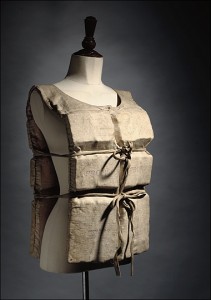 Of the 2,223 passengers on the Titanic, only 706 survived leaving 1,517 dead. The largest percentage of survivors were first class passengers, followed by second class, and finally third class. Most of the deaths were due to hypothermia in the freezing water, which would cause death in less than 15 minutes. 6 of the 7 children in first class survived. All of the children in second class survived, whereas only 34 percent were saved in third class. 4 first class women died, 86 percent women survived in second class and less than half survived in third class.
Of the 2,223 passengers on the Titanic, only 706 survived leaving 1,517 dead. The largest percentage of survivors were first class passengers, followed by second class, and finally third class. Most of the deaths were due to hypothermia in the freezing water, which would cause death in less than 15 minutes. 6 of the 7 children in first class survived. All of the children in second class survived, whereas only 34 percent were saved in third class. 4 first class women died, 86 percent women survived in second class and less than half survived in third class.Overall, only 20 percent of the men survived, compared to nearly 75 percent of the women. First-class men were four times as likely to survive as second-class men, and twice as likely to survive as third class men. Another disparity is that a greater percentage of British passengers died than American passengers; some sources claim this could be because many Britons of the time were too polite and queued, rather than to force and elbow their way onto the lifeboats as some Americans did. According to witnesses, the captain, Edward John Smith, shouted out: “Be British, boys, be British!” as the ocean liner went down.

Image via Movie Wallpapers
Titanic Wreckage and Artifacts
The Titanic wreckage lay at the bottom of the Atlantic Ocean until it was discovered on September 1, 1985 by a French/American expedition using side-scan sonar for the vessel Knorr. The Titanic wreckage was 2.5 miles down and about 370 miles from Mistaken Point, Newfoundland. Dr. Robert Ballard, who was part of the first expedition, returned in 1986 for the first manned dive into the wreckage in the submersible Alvin.The most astounding discovery of the time was that the Titanic had actually split apart despite what was originally assumed. Plates, chairs, and other Titanic artifacts are scattered all around the wreckage, while softer material such as wood and human remains have been devoured by underwater organisms. Dr. Ballard originally did not bring up any Titanic artifacts due to the fact that he saw this action as the equivalent of grave robbing, but many were eventually recovered and put on display at the National Maritime Museum in Greenwich, England or part of a traveling exhibition.
Titanic wreckage has remained relatively stationary, but scientists believe that the multiple expeditions have caused extensive damage to the shipwreck and believe that the Titanic wreckage will collapse to the ocean floor within the next 50 years due to extensive damage caused by tourism and exploration. The mast has almost completely deteriorated and has been stripped of its bell and brass light. Other damage includes a gash on the bow section where block letters once spelled Titanic, part of the brass telemotor which once held the ship’s wooden wheel is now twisted and the crow’s nest is completely deteriorated.
Text and images via Titanic Universe
Wreckage of the Titanic by Ken Marschall
Ten items that went down on the Titanic
Wreckage of the Titanic by Ken Marschall
When the opulent passenger liner RMS Titanic was built in 1912, it was declared by Shipbuilder magazine to be "practically" unsinkable. Unfortunately, the word practically turned out to be key. On the Titanic's maiden voyage from Southampton, England, to New York City, it hit an iceberg and sank in just three hours. Of the 2,229 passengers and crew onboard, only 713 survived.

Image via Wikipedia
The ship has been a source of fascination ever since, partly because of the many stories associated with its sinking, but also because of the huge wealth that went down with the ship and remains on the ocean floor to this day. Here are some of the people and cargo that were on board that fateful early morning.10. Passenger Facilities
The sinking of the Titanic also meant the loss of some of the most opulent facilities ever seen on a cruise liner. These included the first-ever onboard heated swimming pool, a Turkish bath, first- and second-class libraries, and a veranda cafe with real palm trees. For communication, the ship had a Marconi wireless radio station to send and receive telegrams and a 50-phone switchboard complete with operator. The Titanic even had its own state-of-the-art infirmary and operating room staffed by two physicians. All of this was lost when the ship sank.9. Freight
One important function of the Titanic was to carry transatlantic mail. When the ship sank, there were 3,364 bags of mail and between 700 and 800 parcels onboard, contents unknown. Other cargo claimed as lost included 50 cases of toothpaste, a cask of china headed for Tiffany's, five grand pianos, and 30 cases of golf clubs and tennis rackets for A.G. Spalding. However, contrary to popular myth, the Titanic was not carrying an ancient Egyptian mummy that was believed to have cursed the ship.8. Art
Perhaps unsurprisingly, considering the wealth of many of its passengers, the Titanic was carrying a number of works of art, all of which were lost when the ship sank. The most spectacular of these was a jeweled copy of The Rubaiyat, a collection of about 1,000 poems by the 11th-century Persian mathematician and astronomer Omar Khayyam. The binding of this incredibly luxurious book contained 1,500 precious stones, each set in gold. It had been sold at auction in March 1912 to an American bidder for £405 or around $1,900 ($41,644 in 2012) - 15 years worth of wages for a junior crew member on the Titanic.7. Linen
The restaurants, cafes, kitchens and bedrooms of the Titanic required so much linen that White Star Line built a large laundry close to the docks at Southampton. Each time the ship docked, the dirty linen could quickly be unloaded and cleaned for the next voyage. The 200,000 individual items (not including items belonging to passengers) included 18,000 bed sheets, 6,000 tablecloths, 36,000 towels and 45,000 table napkins.
Some of the more famous first-class passengers included millionaire Benjamin Guggenheim and his manservant, who both helped women and children into lifeboats before changing into their best clothes and preparing to "die like gentlemen," which they did. Also in first class was Lady Duff Gordon, a dress designer whose clientele included the British royal family. She and her husband survived, but they were later questioned why their lifeboat had been only half full. They were accused of bribing crew members to not allow more people into the boat.
John Jacob Astor IV, the richest man in the world at the time, was also onboard. He assisted his pregnant wife, Madeleine, onto a lifeboat but was not allowed to board himself because officers were applying the principle of "women and children first." Madeleine survived, but John went down with the ship.
- tell your friends!
6. Tableware
Serving all that food and drink required 57,600 items of crockery, 29,000 pieces of glassware and 44,000 pieces of cutlery. The cutlery alone would have weighed more than 4,000 pounds - about the weight of four cows5. Drink
Passengers needed something to wash down all their food, so the Titanic carried 15,000 bottles of ale and stout, 1,000 bottles of wine, and 850 bottles of spirits, plus 1,200 bottles of soft drinks and mixers, such as lemonade, tonic water and orange juice.4. Food
With all those people onboard, it's not surprising that the ship contained incredible quantities of food. There were 75,000 pounds of fresh meat, as well as 15,000 pounds of fish, 25,000 pounds of poultry and 2,500 pounds of sausages (around 40,000 sausages). Among other items, the ship carried 40 tons of potatoes and 1,750 pounds of ice cream - that's the weight of a full-grown elephant.3. Lifeboats
Famously, the Titanic had an inadequate number of lifeboats for the number of people it carried. In fact, it had just 20, with a total capacity of 1,178 people -- about half the number onboard. The ship had been designed to hold 32 lifeboats (still not enough for everyone), but the owner, White Star Line, had been concerned that too many boats would spoil its appearance.2. Crew
The Titanic had around 900 crew members, of whom 215 survived. These staff included the deck crew (responsible for sailing the ship), the engineering department (who kept the engines running), the victualing department (responsible for passenger comfort), restaurant staff and musicians. As the ship was sinking, its two bands came together on the deck and played to keep the spirits of the passengers up. None of the band members survived.1. Passengers
The ship carried 1,316 passengers - 325 in first class, 285 in second class, and 706 in third class - of which 498 survived. Around two-thirds of first-class passengers survived, compared to around one-quarter of those in third class, mainly because, at some point after the collision, the gates to the third-class quarters were locked, denying those passengers access to lifeboats.Some of the more famous first-class passengers included millionaire Benjamin Guggenheim and his manservant, who both helped women and children into lifeboats before changing into their best clothes and preparing to "die like gentlemen," which they did. Also in first class was Lady Duff Gordon, a dress designer whose clientele included the British royal family. She and her husband survived, but they were later questioned why their lifeboat had been only half full. They were accused of bribing crew members to not allow more people into the boat.
John Jacob Astor IV, the richest man in the world at the time, was also onboard. He assisted his pregnant wife, Madeleine, onto a lifeboat but was not allowed to board himself because officers were applying the principle of "women and children first." Madeleine survived, but John went down with the ship.

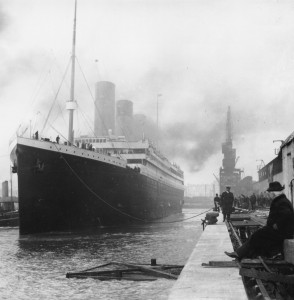
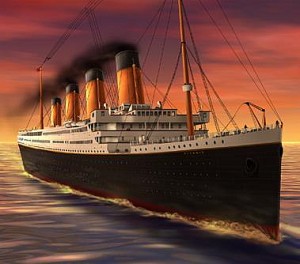
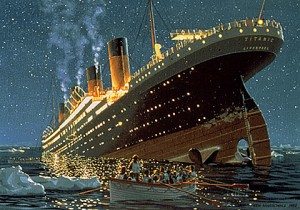
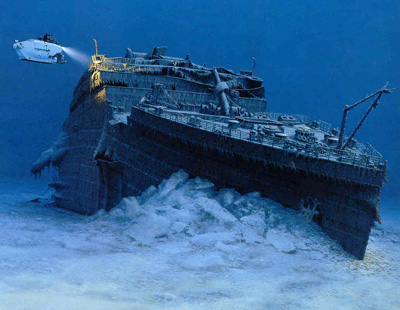






No comments:
Post a Comment